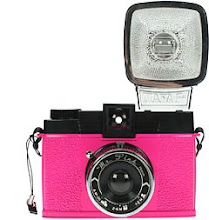
Last year, the V&A devoted an entire exhibition to Surrealism. Gems such as Schiaparelli's Skeleton dress and Dali's Ruby Lips brooch were presented with 300 (or so) other iconic paintings, photographs, films and objets. I've gathered images of the original Surrealist works that inspired some of the V&A fashion shots - so you can see them sidled up to each other.
The term 'surrealism' was first coined in 1917 by the art critic and poet, Guillaume Apollinaire. In 1924, French writer and poet, André Breton, wrote The Surrealist Manifesto (Le Manifeste du Surréalisme) to describe a politically radical movement that aimed to change perceptions of the world. It became the bible for a literary and artistic movement which professed that harnessing dreams and uninhibited thoughts and feelings was a vital part of the creative and philosophical process. In exploring dreams and the irrational, the Surrealists used 'automatic' techniques to draw images from the realm of unconscious process.

During the 1930s, Surrealism escaped the bounds of a radical avant-garde art movement and transformed the wider worlds of theatre, design, fashion and advertising. For some, Surrealism's assimilation into the commercial world was to be celebrated, while for others it went against the political principles of the movement.
Artists such as Dalí, Magritte and Miro embraced these beliefs wholeheartedly and gave the movement a more visual slant. In turn, these weird and witty images soon caught the eyes of designers and couturiers keen to inject a little fun and cleverness into their own work. Vogue and Harper's Bazaar heralded the arrival of Surrealism with Dali-designed spreads; Man Ray and other photographers turned models into Surrealist masterpieces.

:(inspirations - from top): horst p. horst, the mainbocher corset, 1939; rene magritte, the future of statues, 1937; v&a photo of model next to giorgio de chirico's costume designs for the ballet, le bal, 1929; meret oppenheim, table with bird's feet, 1939.
7.06.2008
surreal fashion


















































